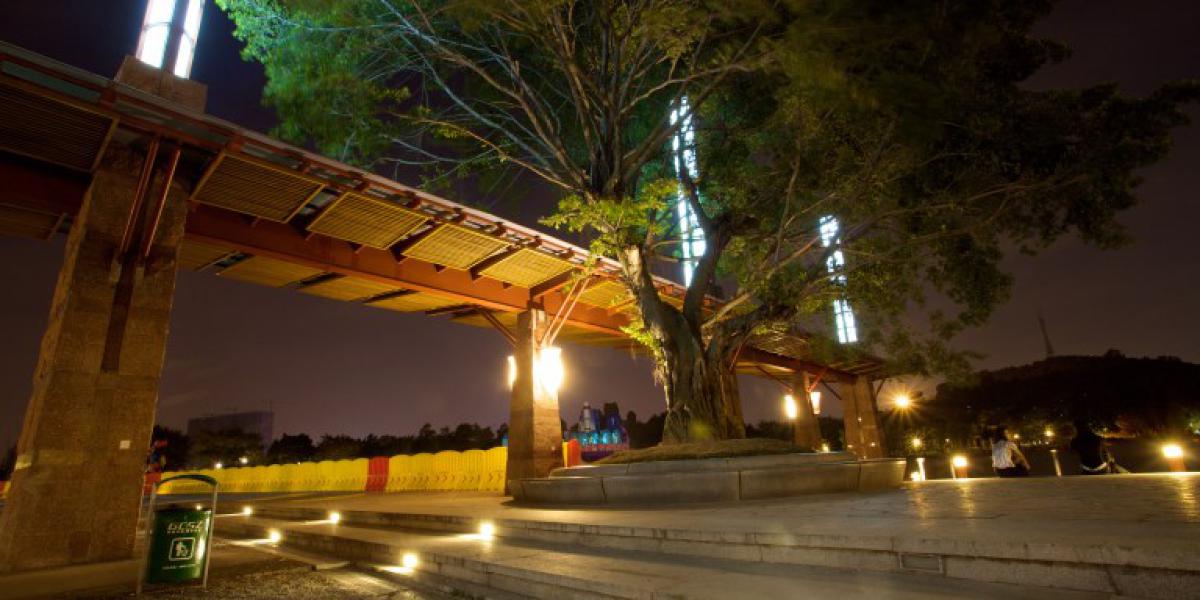East Asia Blog Series
A Virtual Power Plant that Creates Real Energy
Xinjian Liu 10 Mar 2017
In the People's Republic of China, a project is saving enough energy to match the equivalent of building a 107-megawatt power plant.
Overview
Since 2000, electricity use in the People’s Republic of China has been rapidly increasing at an annual rate of over 13%. By 2004, serious power shortages had become persistent, and more than half of the provinces in the country had to curtail power supplies during the peak periods in summer.
Furthermore, approximately 80% of the electricity is produced by coal-fired power plants, generating substantial amounts of air pollutants and greenhouse gases. More than half of the cities in the country have failed to meet the national ambient air quality standards.
Increased energy consumption has also led to more fuel imports. In 2013, the People’s Republic of China imported 327.1 million tons of coal. Projections suggest that oil imports will increase to about 13.1 million barrels per day in 2030, up from 3.5 million barrels per day in 2006.
In 2008, the People’s Republic of China and the Asian Development Bank embarked on an energy efficiency program to improve the country’s energy security and environment. The Guangdong Energy Efficiency and Environment Improvement Investment Program focused on creating additional system capacity through an efficiency power plant in Guangdong province.
An efficiency power plant is a strategic option that would help increase a country’s power generation capacity without building additional power plants. Because an efficiency power plant is a virtual power plant, building it does not mean constructing power generation infrastructure. Rather, it entails investments in conservation and efficiency measures that reduce energy demand and yield energy savings equivalent to the capacity generated by an actual power plant. Conservation measures include retrofitting electrical equipment for power savings and using more energy-efficient equipment and technologies.
Project information
Project snapshot
- Approval date: Jun 2008
- Closing date: Dec 2011
- Amount of loan: US$ 35 million
- Executing agency: Guangdong Provincial Government Geographical
- Financing: Asian Development Bank
Challenges
Guangdong is in southern People’s Republic of China. Its population of 92 million has grown an average 2.2% per year since 1995. Its economy is the largest and fastest-growing among the country’s provinces.
In 2007, before the project started, Guangdong’s installed generation capacity totaled 59.3 gigawatts, one of the biggest in the country. However, power demand has grown 13% per year since 1995, and Guangdong imports its coal, oil, and electricity (100%, 80%, and 20%, respectively) from other provinces. Power demand has outpaced capacity, causing severe power shortages during peak hours in summer.
Solution
Choosing Guangdong
Guangdong was chosen as the best site because the project would help expand power generation capacity in the country’s largest provincial economy and secure energy supply without further harming the environment. It was envisaged that the success of this project would potentially spur more cities in the country to explore using efficiency power plants.
Implementing energy efficiency subprojects
To create the efficiency power plant, Guangdong implemented eight energy efficiency subprojects for Tranche 1 of the program, which retrofitted, upgraded, and replaced appliances and equipment owned by end users, industries, and commercial establishments. It also implemented subprojects on waste-to-energy measures.
The municipal government established the Efficiency Power Plant Project Management Office to handle overall implementation of the energy efficiency subprojects.
For Tranche 1, eight agencies ran subprojects as subborrowers. Upon completion, the subprojects created an efficiency power plant capacity of 130 megawatts, saving 651 gigawatt hours per year.
Strategic lending mechanism
Many companies do not seek loans for energy efficiency projects because it takes funding away from their core business operations. They would rather seek funding for business expansion or the establishment of a new business. To address this, the program used a financial intermediary loan scheme with strengthened implementation supervision and a simplified process for subproject appraisal. This scheme not only made funding for retrofits available to companies, but also gave Guangdong needed flexibility to quickly complete energy efficiency projects. It functioned as a revolving fund; new subprojects could be financed as subloans for each repaid subproject, multiplying energy savings.
Using Asian Development Bank loan proceeds, the project established a special single-purpose trust fund managed by a financial intermediary, the Guangdong Finance Trust Company. Together with the Efficiency Power Plant Project Management Office, they appraised subproject applications and the Guangdong Finance Trust Company on-lent to financially viable efficiency power plant subprojects. Repayments of subloans, net of transfers to the Guangdong provincial government for servicing the loan, were used for further on-lending. The trust was available only for efficiency power plant projects and could not be mixed with other trust funds.

Numbers and facts
107 megawatts power generated
175,813 tons/year coal use projected reduction
415,560 tons/year carbon dioxide emissions projected reduction
1,785 tons/year suspended particulates emissions projected reduction
Results
Upon completion in 2011, Tranche 1 generated efficiency power plant capacity totaling 130 megawatts and energy savings totaling 651 gigawatt hours per year, exceeding the initial target of the entire investment program (i.e., 532 gigawatt hours of energy savings per year and an equivalent 107 megawatts in capacity).
In addition, the project demonstrated how efficiency power plants can be created in a systematic way. It tasked two entities for two aspects of program implementation. The Efficiency Power Plant Project Management Office appraised the technical feasibility of the subprojects and subproject implementation, whereas the Guangdong Finance Trust Company appraised the financial viability of subborrowers and on-lending. Thus, each entity complemented and supplemented the other. The project management office ensured smooth implementation and timely loan repayment by subborrowers, freeing loan availability for the next subproject borrower. This partnership facilitated more energy saving projects.
Moreover, the project facilitated the development of energy service companies. At the outset, two energy service company subborrowers implemented waste heat recovery and industry energy-efficiency retrofitting projects. By 2011, two other subborrowers had established their own energy service companies.
Guangdong’s efficiency power plant model has attracted attention from other municipalities in the country, and many made study visits to learn about it. Shandong and Hebei provinces have already replicated Guangdong’s model.
Lessons
Creating a replicable model
The structure of Guangdong’s efficiency power plant model was straightforward. The project created a trust company and a project management office with distinct but complementary tasks in facilitating energy efficiency projects. Together, they were able to exceed project expectations, demonstrating that a simple structure with clear-cut delineations can ease implementation, especially in areas where the efficiency power plant is relatively unknown. Project implementation was easier for subproject borrowers because it simplified the whole efficiency power plant process, from loan request to completion. Other municipalities can easily replicate the model.
Savings and on-lending
Subborrowers who successfully implement efficiency power plant subprojects can anticipate both energy and financial savings. Their loans yield monetary benefits, and full repayment is rolled over to the next borrower, expanding loan availability for other agencies seeking funds to implement their own efficiency power plant projects.
References
ADB. 2013. Completion report: MFF: Guangdong Energy Efficiency and Environment Improvement Investment Program – Tranche 1. Manila.
ADB. 2015. Knowledge and Power: Lessons from ADB Energy Projects. Manila.
Same Energy, More Power: Accelerating Energy Efficiency in Asia
State-of-the-art Technology Boosts Energy Efficiency in Uzbekistan
Author

Xinjian Liu
Senior Project Officer (Energy), East Asia Department, ADB
This blog is reproduced from Development Asia.


